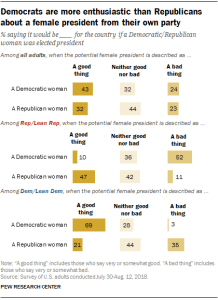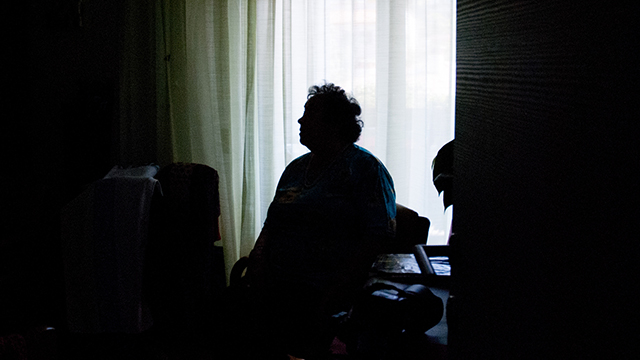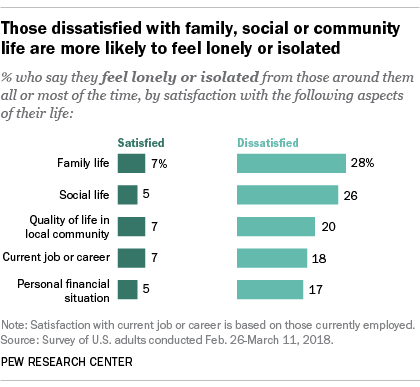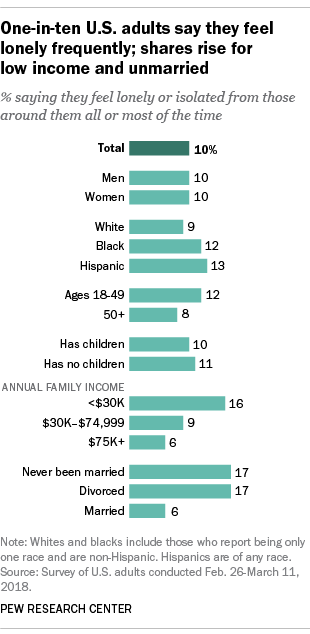

One-in-ten Americans say they feel lonely or isolated from those around them all or most of the time, according to a Pew Research Center survey conducted earlier this year. While this is a small share of U.S. adults overall, the share rises significantly for some groups, including those who feel weak ties to the communities they live in and those who are financially stressed.

Perhaps unsurprisingly, frequent loneliness is linked to dissatisfaction with one’s family, social and community life, the survey found. About three-in-ten (28%) of those dissatisfied with their family life feel lonely all or most of the time, compared with just 7% of those satisfied with their family life. Satisfaction with one’s social life follows a similar pattern: 26% of those dissatisfied with their social life are frequently lonely, compared with just 5% of those who are satisfied with their social life. It’s unclear whether dissatisfaction with particular areas of life leads to feelings of loneliness or vice versa – or whether something else entirely is driving reported feelings of loneliness and isolation.
One-in-five Americans who say they are not satisfied with the quality of life in their local community feel frequent loneliness, roughly triple the 7% of Americans who are satisfied with the quality of life in their community.
Frequent loneliness is also associated with lower community attachment and knowing fewer neighbors. Those who feel not too or not at all attached to their local community (16%) are more likely than those who are somewhat or very attached (6%) to say they feel lonely or isolated frequently. And one-in-five Americans who say they don’t know any of their neighbors report feeling lonely or isolated all or most of the time. This is double the share among those who know only some of their neighbors (10%). Just 6% of those who know most or all of their neighbors say they feel frequent loneliness or isolation.
Those who show interest in leaving their current community also report higher levels of loneliness. Respondents were asked whether, if they could, they would want to move to a different community. Those who would want to move (17%) are more likely than those who wouldn’t (6%) or weren’t sure (8%) to say they feel lonely all or most of the time.
Personal finances also relate to feelings of loneliness. People who say they are somewhat or very dissatisfied with their personal financial situation are significantly more likely to express feeling frequent loneliness than those who are satisfied with their finances (17% vs. 5%). Similarly, 14% of those who say they don’t have enough income to lead the kind of life they want report feeling lonely or isolated frequently, compared with just 5% of those with enough income to lead their ideal life.

A similar pattern emerges when looking at annual income: 16% of those with an annual family income less than $30,000 say they feel lonely all or most of the time, compared with 9% of middle-income adults and 6% of higher-income adults.
While loneliness is more common among some groups than others, the share of people who feel this way is fairly consistent across most major demographic groups. Roughly one-in-ten Americans say they feel lonely all or most of the time across gender, racial and ethnic, and age groups. There are few differences by community type or party affiliation. In addition, even parental status and the number of years spent living in a community aren’t strongly correlated with feelings of loneliness or isolation.
Marital status is, however. Those who are divorced or have never been married (17% each) are more than twice as likely to feel frequent loneliness than those who are married (6%).
